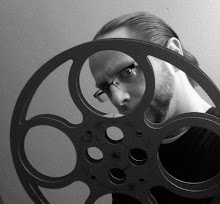In the late 1990’s, STAR WARS director and creator George
Lucas turned the cinema world upside down when he and his LucasFilm rolled out
the latest STAR WARS film in a digital format. It would be the first shot in a
revolution which would change the way we view movies in a theatre forever. Gone
to the graveyard would be the old film projectors with their rollers, reels,
platters, gates, and wheels…and enter the age of massive hard-drives and
billions of gigabytes. The digital revolution not only infiltrated our
theatres, but it also invaded the way movies were shot on set. Film cameras
were replaced with digital, and while many filmmakers are still holding out on
shooting on film, it’s been a slow decline for the old 35mm format.
This year, director Christopher Nolan (THE DARK KNIGHT,
INCEPTION), is flaring up a revolution of a different sort. The technical-savvy
director is having his way with his upcoming, highly anticipated film
INTERSTELLAR. In October, Paramount and Warner Bros. announced that theatres
that could still project 35mm and 70mm film would receive prints of
INTERSTELLAR two days early, on November 5th, which includes all 41
true IMAX locations. In short, if your local theatre still has an old film
projector in service, you can see INTERSTELLAR two days early.
Many theatre owners are not pleased with the move. Most
theatres across the country have spent millions of dollars to upgrade their
facilities to digital, and many have scrapped or stowed their old 35mm
projectors. For those who want to dust off the old equipment, it’s a logistical
and technical nightmare. For others who have to wait two days before they get
their digital prints, it’s a loss of income. Much like Lucas did in 1999, Nolan
has turned the industry upside-down.
It’s difficult to figure out exactly what Nolan’s angle is
with this move. He and other directors such as Quentin Tarantino and Paul
Thomas Anderson have been advocating shooting
on film for years. It is their contention, and the contention of many
others, that film is the superior format and digital cannot touch the clarity,
resolution, or that special stylized “cinema-look” that most of us grew up
watching for decades. But it is fair to say, that digital always has room to
evolve, while film does not.
But the real issue here is the presentation. Shooting on
film and projecting film are two
different issues galaxies apart. A movie shot on film and presented digitally
looks absolutely gorgeous. A movie
shot digitally and presented digitally looks clean and crisp…and maybe a little
cold to the eye (a common complaint). But what it all comes down to is quality.
Film projectors, with their many moving parts touching physical film, always
run the risk of breakage, scratches, dust, and a soft-looking picture. Digital,
with no moving parts have no such issues, and apart from an occasional hard-drive
failure (a rarity), will always present
a clean-looking picture devoid of any defects that film was always susceptible
to. So what is Nolan trying to prove? It seems the man is getting caught up on
principle. Admirable, but in the long run he’s turning a shoulder on the
technology we have to give us a perfect presentation. By all means, keep shooting on film, but don't forget that the final presentation, what we see in the theatre...is what ultimately counts. Even the most beautiful movie can be ruined by a single scratch on opening night.
This Blogger worked as a film projectionist for many years,
and will always have that old love for film. But not all old lovers are worth
revisiting. This Blogger will never forget having his final HARRY POTTER film
ruined by a scratched-to-death print on opening night, and that was the day the old lover got kicked out of bed. Cheers to Nolan for giving us the options to view his new
movie, but be sure to choose wisely.
*
INTERSTELLAR arrives in select film-equipped theatres on
November 5th, and wide-release on November 7th. 

Looks like the Dietrich Theater in Tunkhannock will give us our first look regionally at this new feature. While equipped
ReplyDeletewith Digital technology the theater has preserved the ability to screen 35mm film as well! Great, especially for the Classics!